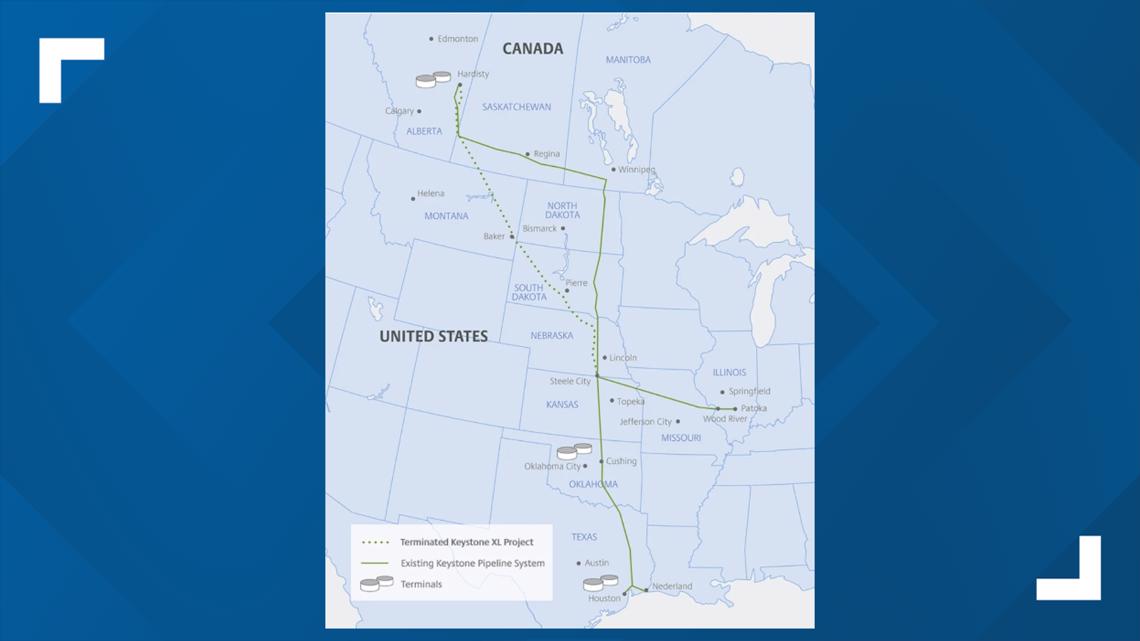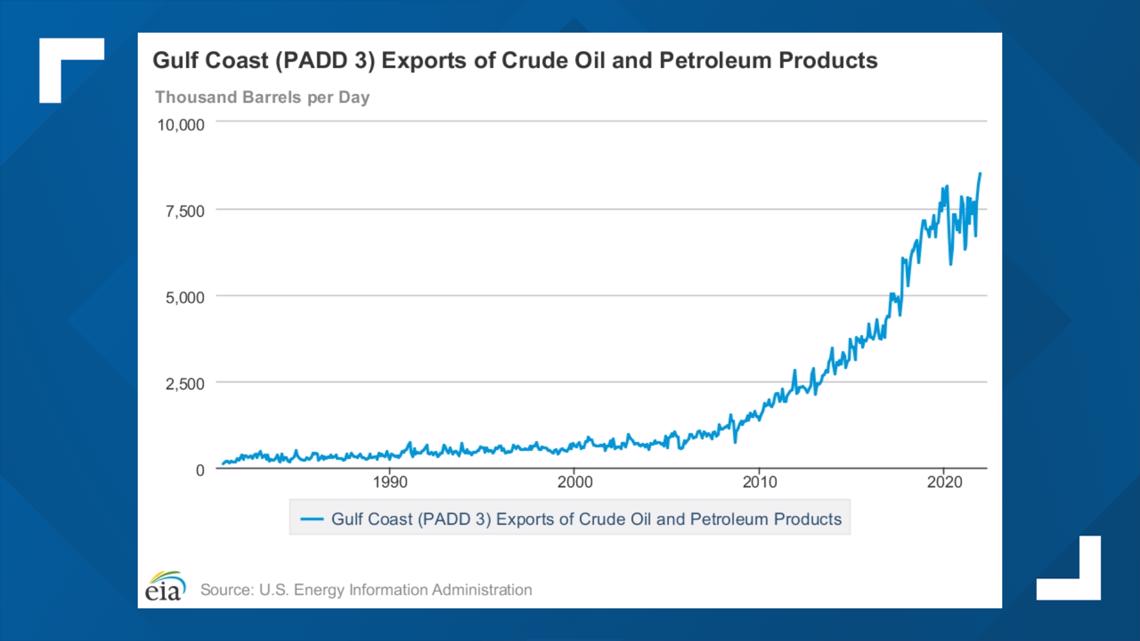PENNSYLVANIA, USA — Editor's note: The above video is from March 4.
After President Biden announced a ban on Russian oil imports on March 8, many Americans are bracing themselves for yet another wallet-slicing increase in gas prices.
Experts predict the nation could "soon set new all-time record highs" for gas costs, all while U.S. inflation shot up to its highest rate in 40 years.
Now, viewers on social media and several U.S. lawmakers are calling to reopen construction of the controversial Keystone XL Pipeline project after President Biden cancelled it on his first day in office.
Many of them claim that if the Keystone XL project had not been terminated, the U.S. would have been able to supply enough of its own oil to offset the deficit that banning Russian oil imports will cause.
We took a look into what the Keystone XL project is and whether the claim that its completed construction would have made up for the amount of oil the U.S. imports from Russia:
What was the Keystone XL Pipeline project?
The Keystone XL pipeline was a proposed extension to the existing Keystone Pipeline that would have travelled from Hardisty, Canada down to Steele City, Nebraska (see dotted line in below map). From there, oil would have been transported via existing pipelines to refineries on the U.S. Gulf Coast to be turned into petroleum.
Although the pipeline's owner—a Canadian company originally called TransCanada that changed its name to TC Energy— first applied for a permit to build the extension in 2008, construction on it did not begin until 2020 after former President Donald Trump approved the project.
That's because Keystone XL became intensely controversial due to a battle between environmental impact and job creation in the energy industry.
Those who supported the extension favored its potential to create jobs and boost America's own oil supply. Those who opposed the project said it would speed up the effects of climate change more than other pipelines. Opponents said the specific type of oil (oil-sands crude from Alberta) that would have been transported through the pipeline uses more energy to extract.
Even though Trump approved the project during his presidential term, President Biden cancelled it in January of last year, effectively terminating the project.


What are people saying?
Along with several viewers on social media, political leaders across the country are also chiming in on the conversation surrounding Keystone XL and the recent ban on Russian oil.
Representative Jake LaTurner (R-Kansas) posted to his Twitter account, writing, "This [Keystone Pipeline] project would have produced 830,000 barrels of oil per day, more than enough to offset what we import from Russia."
Rep. Dan Crenshaw (R-Texas) posted similar numbers, tweeting, "We import 595,000 barrels of oil per day from Russia. The Keystone XL pipeline would have produced 830,000 barrels per day."
Several other political figures like Mike Pompeo, former Vice President Mike Pence, and Sen. Tim Scott (R-South Carolina) have also taken to Twitter about their support for Keystone XL amid soaring gas prices.
THE QUESTION
Would the Keystone XL Pipeline have made up for the amount of oil the U.S. imports from Russia had the project not been cancelled?
THE SOURCES
- U.S. Energy Information Administration
- The White House
- Reuters Fact Check
THE ANSWER
The claim that the Keystone Pipeline would have offset U.S. imports of Russian oil needs context.
WHAT WE FOUND
In May of 2021, the U.S. imported the most amount of oil from Russia since 1973 at 844,000 barrels per day, according to the U.S. Energy Information Administration (EIA). However, that number continually decreased until the end of the year according to the latest available EIA data. By December of 2021, daily imports from Russia dropped to 405,000 barrels per day.
As for the Keystone XL Pipeline, the project was indeed expected to transport 830,000 barrels of oil per day to oil refineries in Texas according to the Natural Resources Defense Council, Reuters and NPR's State Impact Project.
Based off Keystone XL's projected transports and the decreasing amount of Russian oil imports in the latter half of 2021, the pipeline would have likely produced more oil than what the U.S. imports from Russia.
However, that likelihood is based off the notion that the pipeline would have been fully operational by now if President Biden did not cancel its permit, which is not likely.
At the time the cancellation occurred a little more than one year ago, the Keystone extension was only about 8% complete. Thus, the project would have likely taken years longer to complete since construction only began in April 2020.
Aside from the pure construction times, legal battles that plagued the pipeline extension and prevented it from being built since its initial proposal in 2008 would have also presumably delayed the project further.
White House Press Secretary Jen Psaki addressed this during a March 3 White House press briefing after a reporter asked if reopening Keystone XL would help relieve current high gas prices.
"The Keystone [XL] Pipeline has never been operational," said Psaki. "It would take years for that to have any impact. I know a number of members of Congress have suggested that, but that is a proposed solution that has no relationship or would have no impact on what the problem is we, here, all agree is an issue."
Even if Keystone XL had been fully completed, the expected 830,000 barrels of oil produced per day would also not be guaranteed to all go directly to the U.S.
The oil transported from Canada was intended to flow to Gulf Coast refineries, which export a large amount of oil after it has been refined into petroleum products.
According to the EIA, exports from the Gulf Coast have steadily increased 2005 and hit an all-time high in December 2021. The countries who received the most of those exports in that same month were Canada, France and the United Kingdom.



